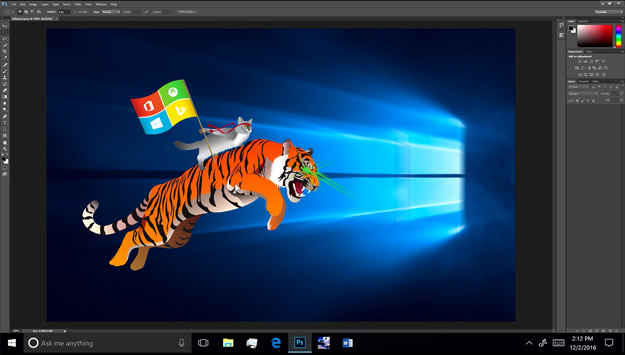Microsoft Did It: Windows 10 Runs On Qualcomm Snapdragon Processor With Standard Windows Apps
Unlike Windows RT, this is a full version of Windows 10 that is compiled to run natively on Qualcomm Snapdragon hardware. That means customers are no longer limited to only running Universal Windows apps (as was the case with Windows RT). Not only will users get all of the features and capabilities that you would expect with Windows 10, but you’ll be able to run Win32 apps as well (only 32-bit x86 support will be offered initially) via emulation, in addition to Windows Universal Apps.
So, why is Microsoft doing this? Of course it's because the Redmond, Washington-based software giant is looking to expand Windows 10’s footprint and to allow its hardware partners to “build always-connected devices without hindering form factor design,” according to Windows chief Terry Myerson. Using Snapdragon processors will allow OEMs to design thinner laptops and convertibles, along with incredibly power-efficient desktops and servers with fully baked in Windows app support.
In the video below, you can see Microsoft demonstrating Windows 10 running on a Snapdragon 820 processor paired with 4GB of RAM. The device has the ability to join a domain (something that wasn’t possible with Windows RT), run Adobe Photoshop CC, Microsoft Office and even play Windows games...
“Qualcomm Snapdragon processors offer one of the world’s most advanced mobile computing features, including Gigabit LTE connectivity, advanced multimedia support, machine learning and superior hardware security features, all while supporting thin, fan-less designs and long battery life,” said Qualcomm Technologies executive vice president Cristiano Amon. “With compatibility with the Windows 10 ecosystem, the Qualcomm Snapdragon platform is expected to support mobility to cloud computing and redefine how people will use their compute devices.”
Microsoft is also placing a large emphasis on mobile devices with built-in cellular connectivity running Windows 10, with Myerson specifically touting the benefits of eSIM technology (an embedded reprogrammable SIM) that negates the need for wasting space in cramped mobile devices for a physical SIM slot. This also means that things are looking brighter for the long-rumored Surface Phone, which could leverage this newfound x86 app emulation to bring a new, incredibly powerful Continuum experience to Windows 10 Mobile devices. Microsoft CEO Satya Nadella even hinted at such a groundbreaking capability in an interview last month.

"We don't want to be driven by just envy of what others have, the question is, what can we bring? That's where I look at any device form factor or any technology, even AI," said Nadella in late November. "We will continue to be in the phone market not as defined by today's market leaders, but by what it is that we can uniquely do in what is the most ultimate mobile device." That particular Nadella interview came roughly a week after news first leaked that Microsoft was working on x86 emulation that would be incorporated into Windows 10 Redstone 3 under the codename Cobalt.
Microsoft and Qualcomm expect that the first devices shipping with Windows 10 and Snapdragon processors will arrive during the second half of 2017.



